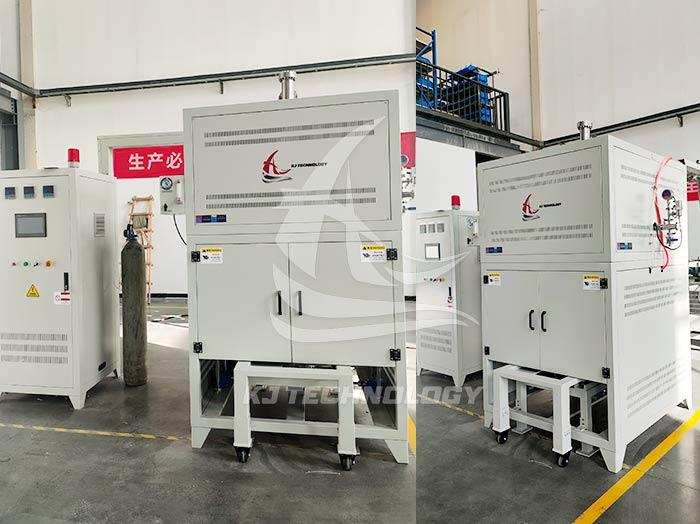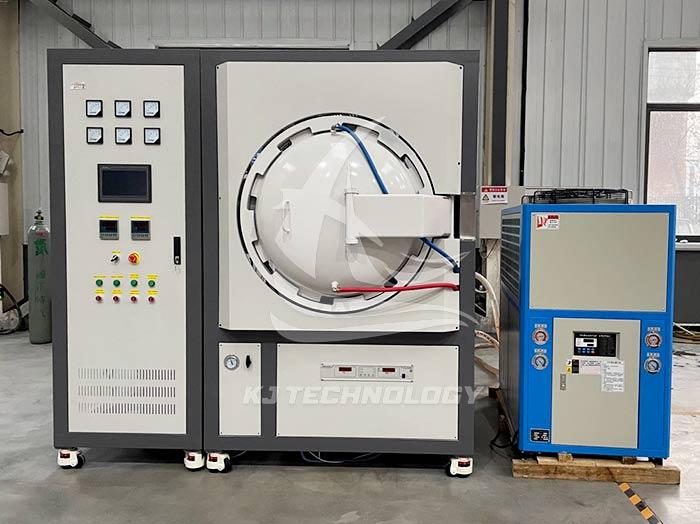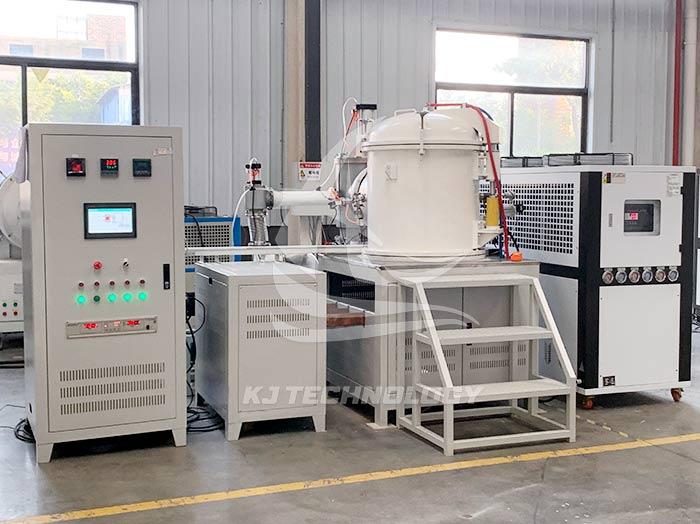High vacuum brazing
 10-31-2025 Author: KJ technology
10-31-2025 Author: KJ technology
High vacuum brazing is a precision welding technique performed in a vacuum environment, whose core principle is to use the low pressure and high temperature conditions in the vacuum environment to connect metal materials together. The following is a detailed introduction to high vacuum brazing:
1. Working principle
High vacuum brazing uses a brazing material with a melting point lower than the base material, and heats the workpiece together with the brazing material to a temperature range higher than the melting point of the brazing material but lower than the melting point of the base material. At this time, the base material remains in a solid state, and the liquid brazing material is filled into the joint gap of the workpiece by capillary action. Through mutual diffusion with the base material, metallurgical bonding is formed, ultimately achieving high-strength connection of the workpiece.
2. Equipment and Technical Requirements
Vacuum system: High vacuum degree (such as 10 ⁻ Pa level) needs to be achieved through multi-stage pumping to avoid gas interference in the welding process.
Heating system: Using high-quality heating elements and precision temperature control technology to ensure temperature uniformity inside the furnace.
Intelligent monitoring and program control module: supports precise execution of multi-stage heating insulation curves.
3. Technical advantages
High welding quality:
A vacuum environment can avoid oxidation reactions, reduce the oxide layer of welded joints, and maintain surface quality.
The brazing material has good wetting and flowability, and can weld complex and narrow channel devices, improving product yield.
No need for soldering flux, avoiding post weld cleaning process and improving the corrosion resistance of the joint.
Strong material adaptability:
Suitable for connecting various dissimilar materials such as aluminum, aluminum alloy, copper, copper alloy, stainless steel, alloy steel, low carbon steel, titanium, nickel, etc.
Good process stability:
The internal structure and fixture of the furnace have a long service life, which can reduce maintenance costs.
The heating temperature is low, the deformation of the workpiece is minimal, the joint is flat and beautiful, and the sealing is good.
High production efficiency:
It can achieve automated control and improve production efficiency.
4. Application Fields
Aerospace: Used for welding high-precision, high-strength, and high demand components such as aircraft fuselage, engine blades, satellite brackets, etc.
High speed trains: used for welding components such as body structure, axles, and bogies.
Medical equipment: used for the manufacturing of medical devices such as artificial joints, endoscopes, and stents.
Electronic devices: used for soldering electronic devices such as printed circuit boards, semiconductor devices, microwave devices, etc.
Heat exchanger: used in the manufacturing of plate fin heat exchangers, oil coolers, and other heat exchangers.
Vacuum equipment: used for the manufacturing of vacuum pumps, vacuum valves, and other vacuum equipment.
5. Typical case
In the aerospace field, the JT9D engine honeycomb sealing ring, fuel manifold, stainless steel heat exchanger and other components of Pratt&Whitney are manufactured using vacuum brazing technology.
In the field of automobile manufacturing, Ford Motor Company uses vacuum brazing technology to produce aluminum radiator cores, which improves the heat exchange performance and corrosion resistance of radiators.
In the field of medical devices, vacuum brazing technology is used in the manufacturing of artificial joints, which improves the sealing and service life of joints.








